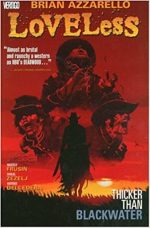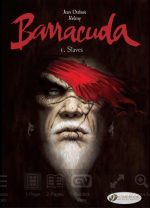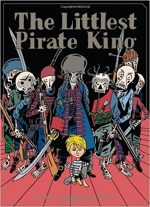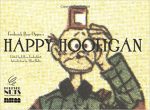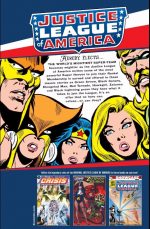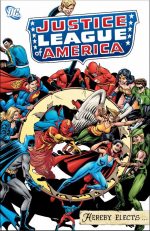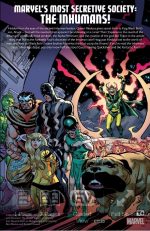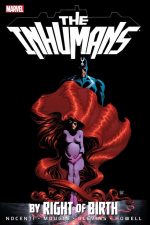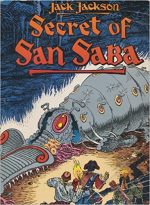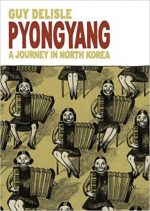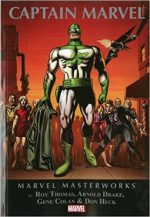
By Stan Lee, Roy Thomas, Arnold Drake, Gene Colan, Don Heck & various (Marvel)
ISBN: 978-0-7851-6756-3
After years as an also-ran and up-and-comer, by 1968 Marvel Comics was in the ascendant. Their sales were catching up with industry leaders National/DC Comics and Gold Key, and they finally secured a new distribution deal that would allow them to expand their list of titles exponentially. Once the stars of “twin-books†Tales of Suspense, Tales to Astonish and Strange Tales all got their own titles the House of Ideas just kept on creating.
One dead-cert idea was a hero named after the company – and one with some popular cachet and nostalgic pedigree as well. After the DC/Fawcett court case of the 1940s-1950s, the name Captain Marvel disappeared from the newsstands.
In 1967, during a superhero boom/camp craze generated by the Batman TV show, publisher MLF secured rights to the name and produced a number of giant-sized comics featuring an intelligent robot who (which?) could divide his body into segments and shoot lasers from his eyes.
Quirky and charming and devised by the legendary Carl (Human Torch) Burgos, the feature nevertheless could not attract a large following. On its demise, the name was quickly snapped up by the expanding Marvel Comics Group.
Marvel Super-Heroes was a brand-new title: it had been the giant-sized reprint comicbook Fantasy Masterpieces, combining monster and mystery tales with Golden Age Timely Comics classics, but with the twelfth issue it added an all-new experimental section for characters without homes such as Medusa, Ka-Zar, Black Knight and Doctor Doom, and debuted new concepts like Guardians of the Galaxy, Phantom Eagle and, to start the ball rolling, an troubled alien spy sent to Earth from the Kree Galaxy. He held a Captain’s rank and his name was Mar-Vell.
Most of that is covered in series-author Roy Thomas’ Introduction before this cosmically conceived tome – available in hardcover, paperback and digital editions – kicks off. On offer are the origin adventure from Marvel Super-Heroes #12-13 and the contents of Captain Marvel #1-9 collectively spanning cover-dates December 1967 to January 1969…
Crafted by Stan Lee, Gene Colan & Frank Giacoia, the initial MS-H 15 page-instalment ‘The Coming of Captain Marvel’ devolved directly from Fantastic Four #64-65 wherein the quartet defeated a super-advanced Sentry robot from a mythical alien race, only to be attacked by a high official of those long-lost extraterrestrials in the very next issue!
After defeating Ronan the Accuser, the FF heard no more from the far from extinct Kree, but the millennia-old empire was once again interested in Earth. Dispatching a surveillance mission, the Kree wanted to know everything about us. Unfortunately, the agent they chose was a man of conscience; whilst his commanding officer Colonel Yon-Rogg was a ruthless rival for the love of the ship’s medical officer Una.
No sooner has the good captain made a tentative planet-fall and clashed with the US army from the local missile base (often hinted at as being Cape Kennedy) than the first instalment ends. Stan and Gene had set the ball rolling but it was left to Roy Thomas to establish the basic ground-rules in the next episode.
Colan remained, this time with Paul Reinman inking. ‘Where Stalks the Sentry!’ sees the alien spy improving his weaponry before an attempt by Yon-Rogg to kill him destroys a light aircraft carrying scientist Walter Lawson to that military base.
Assuming Lawson’s identity, Mar-Vell infiltrates “The Cape†but arouses the suspicions of security Chief Carol Danvers. He is horrified to discover that the Earthlings are storing the Sentry (defeated by the FF) on base. Yon-Rogg, sensing an opportunity, activates the deadly mechanoid. As it goes on a rampage only Mar-Vell stands in its path…
That’s a lot of material for twenty pages but Thomas and Colan were on a roll. With Vince Colletta inking, the third chapter was not in Marvel Super-Heroes but in the premiere issue of the Captain’s own title released for May 1968
‘Out of the Holocaust… A Hero!’ is an all-out action thriller, which still made space to establish twin sub-plots of “Lawson’s†credibility and Mar-Vell’s inner doubts. The faithful Kree soldier is rapidly losing faith in his own race and falling under the spell of the Earthlings…
The Captain’s first foray against a super-villain is revealed in the next two issues as we find that the Kree and the shapeshifting Skrulls are intergalactic rivals, and the latter want to know why there’s an enemy soldier stationed on Earth.
Sending their own top agent in ‘From the Void of Space Comes the Super Skrull!’, the resultant battle almost levels the entire state before bombastically concluding with the Kree on top ‘From the Ashes of Defeat!’
Issue #4 saw the secret invader clashing with fellow anti-hero Sub-Mariner in ‘The Alien and the Amphibian!’ as Mar-Vell’s superiors make increasingly ruthless demands of their reluctant agent.
Captain Marvel #5 saw Arnold Drake & Don Heck assume the creative chores (with John Tartaglione on inks) in cold-war monster-mash clash ‘The Mark of the Metazoid’, wherein a mutated Soviet dissident is forced by his militaristic masters to kidnap Walter Lawson (that’s narrative symmetry, that is).
Issue #6 then finds the Captain ‘In the Path of Solam!’; battling a marauding sun-creature before being forced to prove his loyalty by unleashing a Kree bio-weapon on an Earth community in ‘Die, Town, Die!’ However, all is not as it seems since Quasimodo, the Living Computer is also involved…
The romantic triangle sub-plot was wearing pretty thin by this time, as was the increasingly obvious division of Mar-Vell’s loyalties, so a new examination of Dr Lawson, whose identity the Kree man purloined, begins in #8’s ‘And Fear Shall Follow!’.
Wrapping up this first volume is another alien war story as Yon-Rogg is injured by rival space imperialists the Aakon. In the battle Mar-Vell’s heroism buys him a break from suspicion but all too soon he’s embroiled with a secret criminal gang and a robot assassin apparently built by the deceased Lawson, and trouble escalates when the surviving Aakon stumble into the mess in ‘Between Hammer and Anvil!’…
Fascinating extras added in here include a full cover gallery, creator biographies, the December 1967 Marvel Bullpen Bulletins page announcing the coming of Captain Marvel, plus sublime pencil-art pages by Colan: the full 16 un-inked pages from Marvel Super-Heroes #13 for art-lovers to drool over. Glorious!
© 1967, 1968, 1969, 2013 Marvel Characters, Inc. All rights reserved.

